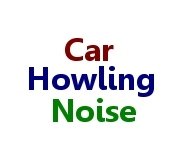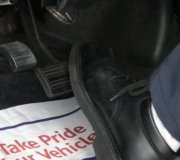It would be almost impossible to diagnose the cause of the noise without standing under the car while running it on a hoist, but I can offer some points to consider.
First of all, every professional has damaged at least one new universal joints in their career, and it's possible one of the new ones is causing a vibration. Also, some power tools used to remove the old joints are so powerful that if it isn't noticed in time, they can bend one of the ears on the end of the shaft for the bearing cups. That will make a vibration that you'll feel in the seat.
The fact that you only feel it in the two highest gears COULD be because you only use those gears at higher speeds which is when imbalance problems are noticed.
A bearing cup could be pressed on too far too. That makes the joint hard to rotate by hand and it can set up a noise. Typically it only takes a couple of smacks with a hammer on the joint's cross to move the offending cup out just a couple of thousandths of an inch, but if that was needed and not done, wear will occur in short order and create enough free play for the noise to go away. This one is hard to spot unless the drive shaft is removed again.
Also be aware that drive line angle is critical in preventing vibrations. That refers to the angle difference between the drive shaft and the front stub shaft going into the transmission, and between the drive shaft and the pinion gear in the rear differential. Those angles are set by the manufacturer according to how the rear axle assembly is rotated on its mounts, but it will change due to changes in ride height. That becomes an issue on older cars, or trucks that are heavily-loaded. Weak springs let the body sag, and in effect, the wheels move up. That will reduce those drive line angles. Too great an angle will set up vibrations. Dummies who raise their trucks up have to deal with that all the time. Too little angle can do the same thing but for a different reason. The tiny roller bearings in the four bearing cups for each u-joint are meant to roll back and forth a little with each drive shaft revolution. When the drive line angle is too small, the bearings don't move very much. They stay in one place and the repeated pounding from shifting, accelerating, and decelerating starts to hammer matching dents in the cups. The bearings rolling over those dents can set up a buzzing or humming noise, and while it can be hard to tell, the sound usually changes as the car's suspension goes up and down as you drive over bumpy roads.
Sometimes drive line vibrations due to low ride height go away when the old u-joints have a lot of wear and are sloppy or real loose. The vibration shows up when new, tight joints are installed. To check for this, visit a tire and alignment shop. They all have small books that list every car model, exactly where to measure the height in front and in back, and what those measurements should be. They usually allow a tolerance of about an inch or so. If the height is real low, the springs must be replaced. If the height is still within specs, but real close to going out of the acceptable limit, there are inserts made for coil springs that are not meant to be a cure, but they are meant to get a little more life out of springs that are going to need to be replaced eventually. I suspect anyone at those shops would just show you the picture for your car, and write down the dimensions so you can take the measurements at home.
Another approach that works for noises, but not for vibrations, is the "Chassis Ear". You might be able to borrow or rent one from an auto parts store that borrows tools. It is a set of six microphones, a switch box, and headphones. You clip the microphones to suspect points, then drive around while listening with the headphones. You can move the microphones around to zero in on the source of the noise. Be aware that many mechanics have never seen or even heard of this tool. Suspension and alignment mechanics use it to find rattles, squeaks, and other noises.
That tool was issued to all Chrysler dealerships in the '90s but it got such little use that most mechanics can't even find it. They also had a vibration analyzer tool available but those weren't real popular. It measured the frequency of a vibration so you could determine what was causing it by looking for what was rotating at that speed or multiples of that rpm. I never used one of those, and I don't know anyone who did.
Friday, August 29th, 2014 AT 10:15 PM



